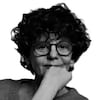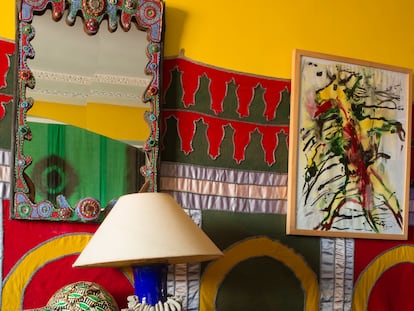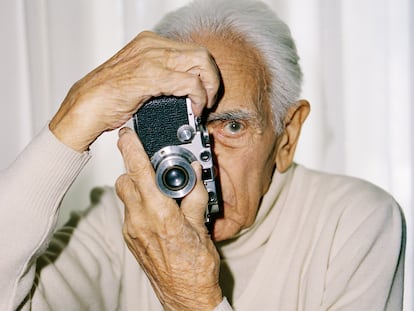Jan Groover, the photographer who discovered the metaphysics of kitchen utensils
The American became famous at the end of the 1970s through a series of still lifes composed of plants and household items. However, her work remains little known in Europe. An exhibition in San Sebastian, Spain, now traces her career

It is said that the January 1979 cover of Artforum magazine was a sign that the photographic medium had definitively conquered the art world. It showed one of the characteristic still lifes of Jan Groover (Plainfield, New Jersey, 1943 – Montpon-Ménestérol, France, 2012). That was the first time that a photograph had served as the main attraction in a specialized art magazine. The cover image formed part of the American artist’s best-known series, Kitchen Still Lifes. “Its voluptuous colors were as impressive as its prices,” critic Andy Grunberg observed in The New York Times.
The famous cover was preceded by an exhibition at New York’s Sonnabend Gallery, where the seductive and timeless still life works composed of plants, vegetables and whichever utensils the author found at hand in the kitchen marked a significant turning point in the career of this photographer. Groover was always haunted by the “wild concept that you could change space — which you can,” she said. A decade later, a retrospective at MoMA consolidated her prestige. That is why she always argued that her work had nothing to do with a theme or a subject, but rather with the relationship among the different elements that compose it and the spaces that remain between them. That is where its force comes from: colors, lines, textures, and forms take precedence over meaning or content. Nevertheless, despite the author’s intentions, Groover’s work is so powerful in evoking the sensations of the everyday world we share that it inevitably drags one into the unsuspected recesses of the imagination, where one believes one can perceive meanings that one does not see.
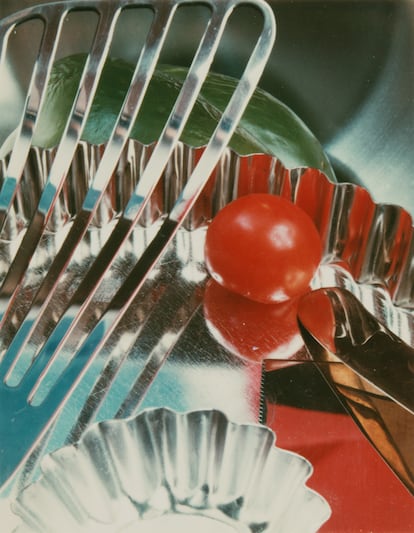

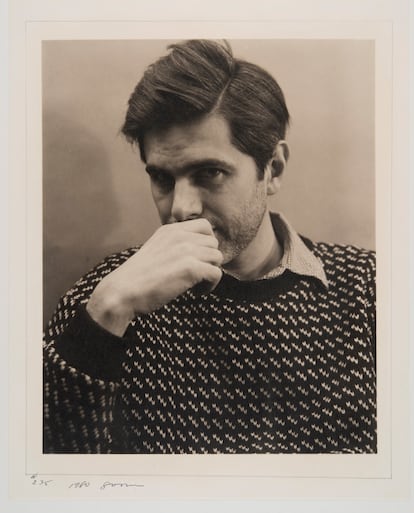
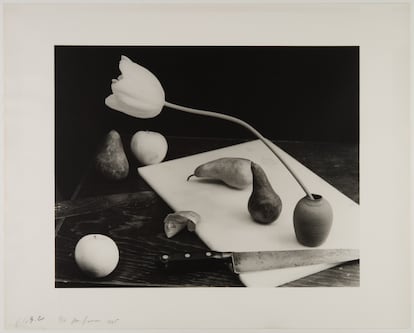
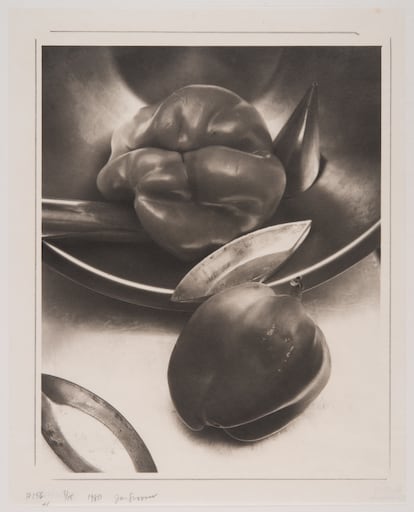
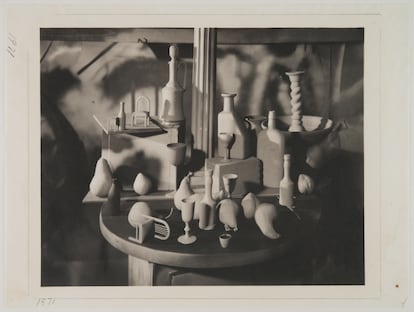
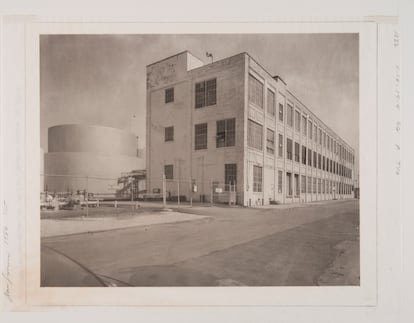
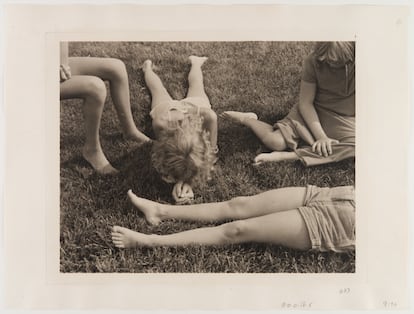
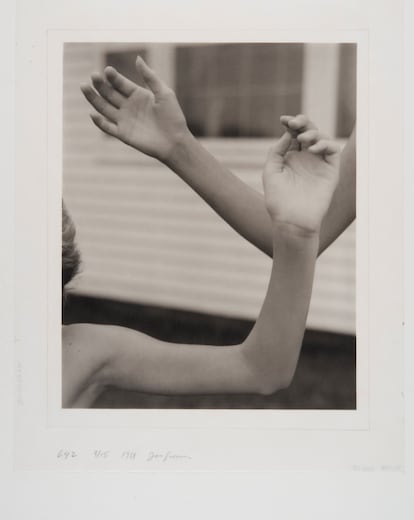
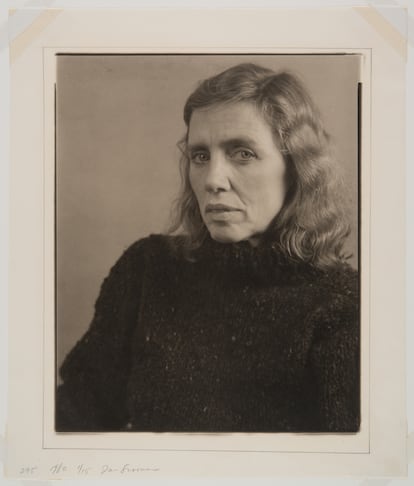
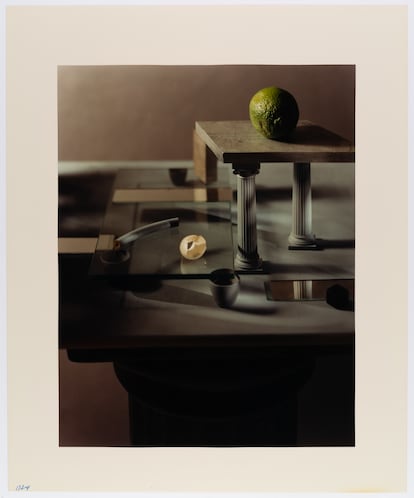
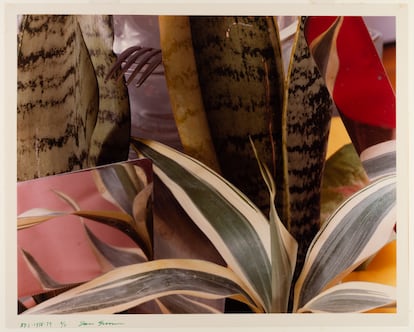
Although the artist was widely recognized in the United States — John Szarkoswki described her as “one of the most interesting and accomplished artists of her time” — and resided in France during the last years of her life, her work has remained little known in Europe. Fortunately, in 2017, painter and critic Bruce Boice, the late photographer’s husband, made a donation to Switzerland’s leading photography museum, Photo Elysée, prompting a re-evaluation of the work of an artist who spent her life reinventing herself. The Jan Groover: Laboratory of Forms exhibit began there, and it can now be seen in the Kutxa Kultur Artegunea, Tabakalera Building, in San Sebastián, Spain.
Through a selection of more than 150 photographs and some objects, the exhibition immerses the viewer in a universe with powerful echoes of the rigor and neatness of Giorgio Morandi, the metaphysical landscapes of De Chirico, the majesty of Fra Angelico and other Renaissance artists to whom Groover continually turned for inspiration; the formalist perfectionism of Edward Weston also influenced her work. Although Groover’s artistic beginnings were in abstract painting, in the early seventies she threw herself fully into photography. “I pretended I was a painter, for a while. Almost as soon as I got out of school I started photographing — photographing the history of photography, repeating lots of things. I was still pretending I was a painter, that way I could relax and make photographs, even make stupid photographs, and it didn’t matter,” the artist recalled. “Then one day I had the thought that I didn’t want to have to make everything up, so I quit painting. Then I found out that you have to make everything up anyway.”
Thus, years later, the author “succeeded in incessantly transforming reality through photography, manipulating it to her liking,” says Tatyana Franck, the co-curator of the exhibition with Émilie Delcambre Hirsch. Composition, through which she explores notions of perspective and scale, is fundamental to her work. Groover seems to “paint” with objects. “She does in photographs what people have traditionally expected paintings to do. She deals with space,” Boice emphasizes in the documentary Jan Groover: Tilting at Space.
The exhibition opens with the polyptychs with which she originally appeared on the photography scene in the 1970s. Inspired by Renaissance paintings and using that format, she demonstrated her interest in the tradition of creating images, as well as her inclination toward the conceptual currents of the time. They include photographs of cars passing by the same place, taken from exactly the same point, and facades of houses that very closely resemble each other. Most of the images are untitled. They seem to allude to questions of time, distance and movement — the same ones that inspired Eadweard Muybridge, another influence on the artist’s work — and refer to the photographic medium’s inherent ambiguity. “Only a New Bauhaus experimenter would claim to be photographing something that doesn’t exist. If we can’t fashion stories out of Miss Groover’s art, we can at least note shifts in ambience and atmosphere that speak volumes,” wrote critic William Zimmer.

In the late 1970s, Groover discovered the platinum-palladium process, a technique that would open new paths in her career. The artist not only put it into practice to explore the still-life genre but also employed it in landscapes, portraits and nudes. Many friends and relatives posed for her, either outdoors or in the intimacy of her studio. “She explored bodies in the same way she would explore fruits and vegetables in one of her still lifes,” notes Delcambre Hirsch. Fragments of bodies were depersonalized and acquired the quality of an object. After all, everything is geometry. Carefully constructed and controlled, photography was a matter of space and form for the artist.
“Jan’s problem with collectors, critics and photographic experts is that she denies meaning; and what everyone seems to want is meaning,” Boice writes in a text included in the show catalog. “A beautiful day and a beautiful landscape have no meaning. An old-fashioned toy or gun found at a flea market is not about guns or violence; it simply points to something else inside a photograph, as a finger in a Renaissance painting would point to something inside the canvas [...] But everyone wants meanings [...] How else can a powerful visual experience be explained or considered? Jan’s photographs were never about meaning, only about the thrill of seeing something.”
Jan Groover: Laboratory of Forms. Kutxa Kultur Artegunea. Kutxa Foundation. Tabakalera Building. San Sebastián, Spain. Open until November 12th.
Sign up for our weekly newsletter to get more English-language news coverage from EL PAÍS USA Edition
Tu suscripción se está usando en otro dispositivo
¿Quieres añadir otro usuario a tu suscripción?
Si continúas leyendo en este dispositivo, no se podrá leer en el otro.
FlechaTu suscripción se está usando en otro dispositivo y solo puedes acceder a EL PAÍS desde un dispositivo a la vez.
Si quieres compartir tu cuenta, cambia tu suscripción a la modalidad Premium, así podrás añadir otro usuario. Cada uno accederá con su propia cuenta de email, lo que os permitirá personalizar vuestra experiencia en EL PAÍS.
¿Tienes una suscripción de empresa? Accede aquí para contratar más cuentas.
En el caso de no saber quién está usando tu cuenta, te recomendamos cambiar tu contraseña aquí.
Si decides continuar compartiendo tu cuenta, este mensaje se mostrará en tu dispositivo y en el de la otra persona que está usando tu cuenta de forma indefinida, afectando a tu experiencia de lectura. Puedes consultar aquí los términos y condiciones de la suscripción digital.
More information
Últimas noticias
Most viewed
- Reinhard Genzel, Nobel laureate in physics: ‘One-minute videos will never give you the truth’
- Oona Chaplin: ‘I told James Cameron that I was living in a treehouse and starting a permaculture project with a friend’
- Pablo Escobar’s hippos: A serious environmental problem, 40 years on
- Why we lost the habit of sleeping in two segments and how that changed our sense of time
- Chevy Chase, the beloved comedian who was a monster off camera: ‘Not everyone hated him, just the people who’ve worked with him’
